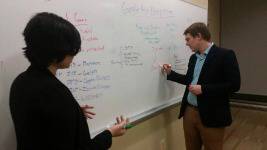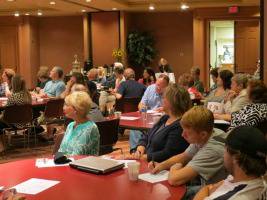May 2016
Collaborative Hunger Initiatives: Networks and Coalitions in Iowa
Iowans pride ourselves on knowing our neighbors and helping each other whenever we have a chance. What does it look like when we apply those values to our work alleviating hunger?
At first glance, there seem to be two stable configurations when organizations rally together to address hunger: Hunger Networks and Hunger Coalitions.
 Networks: the primary function of a network is to know about the people and organizations addressing hunger in a community, to know how to contact them, and to have a general idea of what everyone is working on.
Networks: the primary function of a network is to know about the people and organizations addressing hunger in a community, to know how to contact them, and to have a general idea of what everyone is working on.
Common outputs of a network include directories, educational materials, and possibly collaborating to host one or two easy activities or events.
Networks typically meet monthly or quarterly, and often have one to three individuals who serve as conveners that schedule meetings and send minutes and updates out to the group.
 Coalitions: the primary function of a coalition is to agree on common goals and to pool resources and align activities towards meeting these goals.
Coalitions: the primary function of a coalition is to agree on common goals and to pool resources and align activities towards meeting these goals.
Common outputs of a coalition include and strategy documents, methods to share data and measure success, and collaboration around two or three difficult activities (at a time).
In addition to monthly or quarterly meetings of the full group, coalitions often have subcommittees that meet more frequently to share information and move projects forward.
Coalitions typically require one or two individuals who serve as organizers that convene meetings, delegate responsibilities and track progress, and handle communications and funds on behalf of the coalition as a whole. Most coalitions have an anchor organization that supports the organizer’s work.
Check out our quick guide to collaborative hunger initiatives in Iowa for more information!

